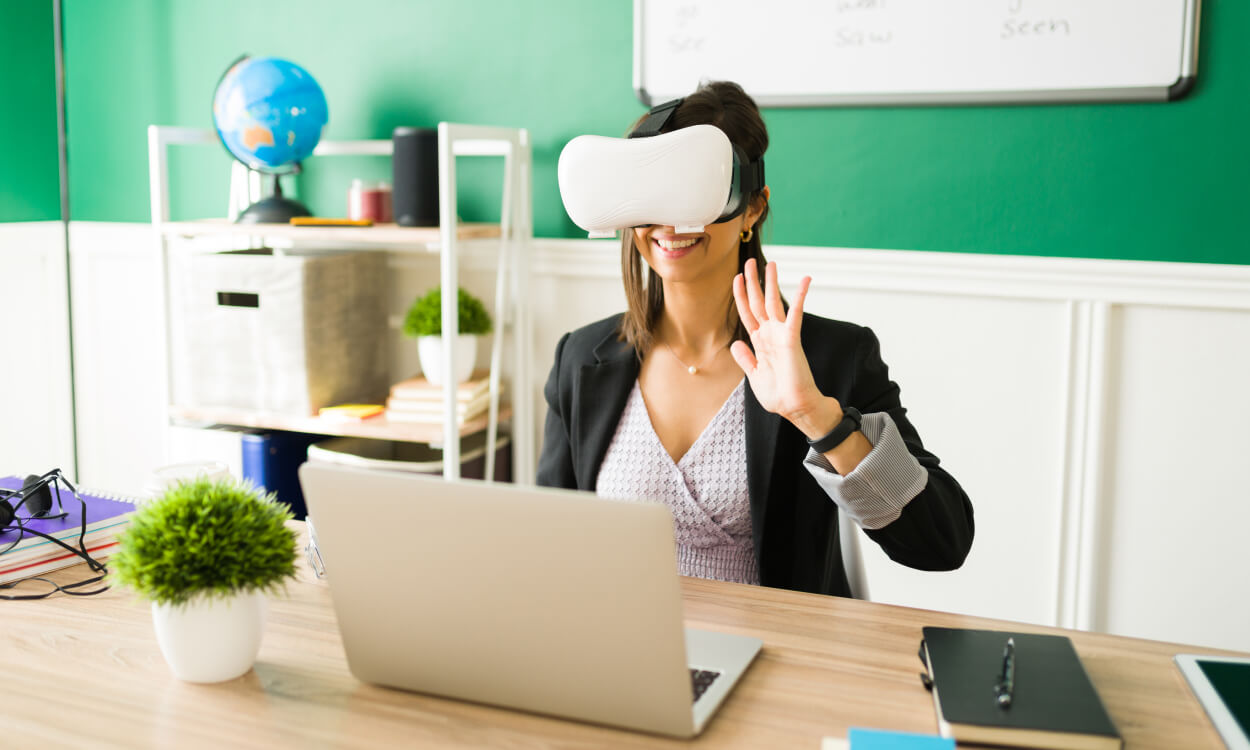How Emerging Tech Solutions Are Enhancing Educational Experiences
September 19, 2024
The education sector has witnessed transformative changes over the past few decades, but none so impactful as the recent surge in emerging technologies. From artificial intelligence (AI) to virtual reality (VR), tech solutions are redefining the way students learn and educators teach.
The classroom of today looks drastically different from the traditional model, with students engaging in more personalized, immersive, and flexible learning environments.
This blog will explore how these emerging technologies are enhancing educational experiences and shaping the future of education.
1. Artificial Intelligence (AI)
Artificial intelligence has made its mark on education by offering personalized learning experiences. Traditional classrooms often follow a one-size-fits-all approach, but with AI, students can benefit from tailored learning paths that suit their unique abilities and needs.
AI-Driven Learning Platforms
AI-powered platforms analyze a student’s performance, strengths, and weaknesses, delivering content that adapts to their progress. Tools like DreamBox and Carnegie Learning adjust the difficulty of exercises based on real-time data, ensuring that students stay challenged but not overwhelmed.
This personalization keeps students engaged and helps them progress at their own pace, fostering a deeper understanding of the subject matter.
AI Tutoring and Assistance
AI-driven tutoring systems like Squirrel AI and TutorMe offer personalized help outside of school hours. These platforms provide instant feedback and guidance, allowing students to receive help whenever they need it, rather than waiting for a teacher’s availability.
Additionally, AI chatbots can answer common queries and provide resources, enabling students to learn independently.
2. Virtual Reality (VR) and Augmented Reality
One of the most exciting developments in education is the integration of virtual reality (VR) and augmented reality (AR).
These technologies create immersive learning experiences that go beyond textbooks, allowing students to interact with their environment and absorb information more effectively.
VR Simulations
In subjects like history and science, VR offers a way for students to experience what they are learning about firsthand. Imagine studying ancient Egypt by virtually walking through the pyramids or learning about the human body by exploring it in 3D.
Tools like Google Expeditions and Nearpod VR offer students opportunities to engage with content in ways that would be impossible in a traditional classroom.
AR in the Classroom
Augmented reality, unlike VR, overlays digital elements onto the real world, enhancing the physical learning environment. Apps like AR Flashcards bring concepts to life by projecting 3D images onto physical spaces, helping students visualize complex ideas.
For example, a biology class might use AR to project a beating heart onto a desk, allowing students to observe its inner workings in real-time.
3. Gamification
Gamification incorporates game design elements into non-gaming contexts to increase motivation and engagement.
In education, this approach has been particularly effective at making learning enjoyable and competitive in a healthy way.
Educational Games and Platforms
Platforms like Kahoot!, Duolingo, and Prodigy use game mechanics to teach academic subjects. By turning learning into a game, students are more likely to stay engaged, take risks, and enjoy the learning process.
These tools often include leaderboards, badges, and points systems, which motivate students to improve their performance.
Gamified platforms also promote collaboration and healthy competition among peers, fostering a more interactive classroom environment.
Gamification for Behavioral Learning
Gamification is also being used to teach soft skills and encourage positive behavior. Tools like Classcraft use role-playing games to help students build teamwork, leadership, and problem-solving skills while improving classroom behavior.
This approach creates a fun and dynamic classroom culture, where students feel more responsible for their actions.
4. Data Analytics
Data analytics has revolutionized the way educators assess student performance and make instructional decisions.
By collecting and analyzing data from various digital learning platforms, teachers can gain insights into student progress, identify trends, and personalize instruction.
Predictive Analytics for At-Risk Students
One of the key benefits of data analytics in education is its ability to identify at-risk students early. Platforms like BrightBytes and Knewton collect data on student engagement, attendance, and academic performance to highlight patterns that may indicate a student is struggling.
By catching these warning signs early, educators can intervene before students fall too far behind.
Customizing Instruction Based on Data
With access to real-time data, teachers can adjust their lesson plans and teaching strategies to better meet the needs of their students. This data-driven approach ensures that no student is left behind and that lessons are effective for a diverse range of learners.
For example, if a class collectively struggles with a math concept, the teacher can identify the issue and spend more time reinforcing the material.
5. Blockchain
Though often associated with cryptocurrency, blockchain technology is making waves in education by providing secure, transparent systems for verifying credentials and achievements.
Blockchain in Credentialing
Blockchain can securely store academic records and certifications, making them tamper-proof and easily shareable.
This eliminates the need for paper transcripts and makes it easier for students to prove their qualifications to employers or other educational institutions. Platforms like Learning Machine and Blockcerts are already leveraging blockchain to issue verifiable digital diplomas.
Lifelong Learning Portfolios
Blockchain technology also supports the concept of lifelong learning by enabling students to maintain a decentralized and permanent record of all their academic achievements, certifications, and skills.
This record can follow them throughout their career, allowing for easier upskilling and reskilling as they enter new fields.
6. Cloud Computing
Cloud computing has played a vital role in democratizing education, making learning materials accessible to anyone with an internet connection. It has enabled online learning platforms to flourish, breaking down the barriers of time and geography.
Online Learning Platforms
Platforms like Google Classroom, Microsoft Teams, and Moodle provide cloud-based solutions that allow students and teachers to collaborate, share assignments, and access resources from anywhere.
This flexibility has proven invaluable, especially during the COVID-19 pandemic, when remote learning became the norm. The cloud ensures that students don’t have to be physically present in a classroom to access education, making learning more inclusive.
Collaboration and Resource Sharing
Cloud computing also fosters collaboration among students and educators. With tools like Google Docs and Office 365, students can work together on projects in real-time, even if they’re miles apart.
Teachers can also use cloud-based resources to share lesson plans, teaching materials, and assessments with their peers, creating a more connected and collaborative educational community.
Wrapping It Up
Emerging technologies like AI, VR, AR, gamification, data analytics, blockchain, and cloud computing are fundamentally transforming the educational experience. These technologies not only enhance the way students learn but also provide educators with the tools they need to offer personalized, engaging, and flexible instruction.
As these innovations continue to evolve, we can expect education to become even more accessible, immersive, and tailored to individual student needs, setting the stage for a future where learning is a truly interactive and personalized journey.




